The Art of Aliveness
Chatting With Tarantula: Authors and Art's Inspiration for January, Eva de Visser
It is a bit after eleven o’clock in the morning when I enter the monumental building in Leiden (The Netherlands) where quite a few of creative professionals found their workspace. In this old school building, built in 1893, Eva de Visser has her atelier.
I climb up a few stairs and there, at the top, awaits Eva, welcoming me with her radiant smile. Coffee or tea? Dutch or English? We decide a coffee for her, tea for me, Dunglish (English with a mixture of Dutch) for both. We kick off a conversation, which I later refer to as “one of the nicest things that happened to me in 2022.”
Birds and Candles
TARANTULA: AUTHORS AND ART: Why birds? is the first question I ask Eva, referring to the little birds flying in her paintings above a deserted dining table. Eva only needed the ‘b’ of the word to start speaking with verve in her determined way that I will get to know so well during this interview.
Eva de Visser: I need the birds because they are alive. Painting a still life without something alive is dull for me. And in this case they are also symbols for the stories that have been told earlier. The people are gone but the birds still carry the spoken words.
So, you never paint a table that is just been set, a table where nothing has happened yet?
Oh, once I did! But then I put in a magpie because it is said this bird loves shiny things. And then that became the story of that painting. And sometimes I paint the table when the people have only temporarily left, to be in another room or something, and the table is waiting for them to return with their stories.
That could be the case here as well, because the candles are still lit.
Yeah! And the candles … I need the candles because of the dramatic atmosphere.
I really like the dramatic in your work. I think almost all your work is very dramatic and theatrical.
Yeah, and I think my work is also melancholic. You need - no, I need - the happiness and the sadness. I want to have them both in my paintings. Sometimes you don’t see the sadness, but it is there. It is in the colors, in the feeling …
Is sadness always represented by the dark?
To me, it has to do with giving the depth. It has a value, it gives meaning.
The darkness gives the depth and in the depths you can more likely find the sadness, the ‘darker’ feelings?
Yes.
Birds, foxes, deer …
Other animals I see in your recent works are the fox and the deer.
These are animals I really love and like to paint! The deer is a tricky one, because it can easily be kitsch. In The Netherlands, there was a drawing made in 1921 that we call the ‘Hertje van Van Meegeren,’ which became so popular that it hang in every fifth household and became part of Dutch folk art, so painting a deer has to do with risk taking. I want to paint a really good deer and stay away from the kitsch. And I struggle because I don’t want it to be just sweet; I put it on a table and placed a magpie on its head. Magpies aren’t liked by everyone because they eat little birds, for example. The magpie contrasts with the deer.
And what about the fox?
The fox is such a beautiful animal! And I also love it because of the stories that are told about foxes. They are believed to be so clever, so cunning... And when that fox jumps on the table people react by saying that is not possible. And then I really love to say: “But hey, it is possible! Look at my painting, it happened, it is there!” I created a new truth, haha!
The Bernini
I pause for a moment to look around Eva’s atelier. When I start to speak again, it is about a huge representation of the statue of David. ‘Villa Borghese,’ I mumble … that is in Rome, right?
Yes, my parents took me there when I was about ten years old. It was my first encounter with the work of Bernini. And I loved it! I loved it so, so much! To me, the sculptor was almost not human because he was able to make this. I was really stunned by his technique.
What makes his technique so brilliant?
The liveliness of the stone! If you are able to do this, to make flesh from stone … you have me. And in addition to that brilliant technique, there is the story, the biblical story of David that I like.
So you wanted to bring Bernini under the attention of people? Was that why you painted his statues?
Yes, one of the reasons, with poor results by the way because in The Netherlands people did not recognize Bernini’s work. Apparently, people need to be familiar with Bernini to fully appreciate this work. There were four paintings in this series and I sold the other three to people who recognized Bernini and love his work like I do. Bernini is a hero to me and painting his work brought it closer to me, I wanted to feel what he did.
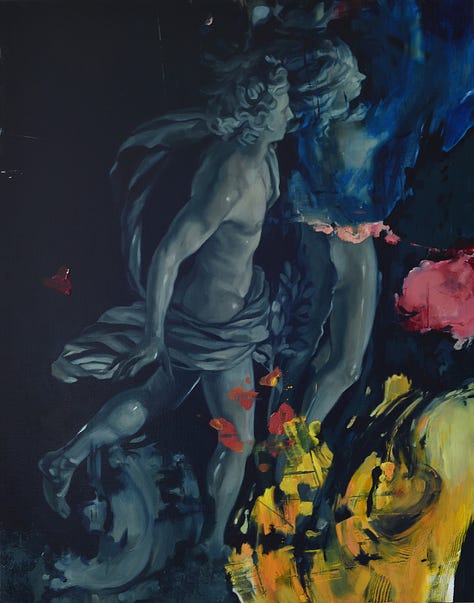
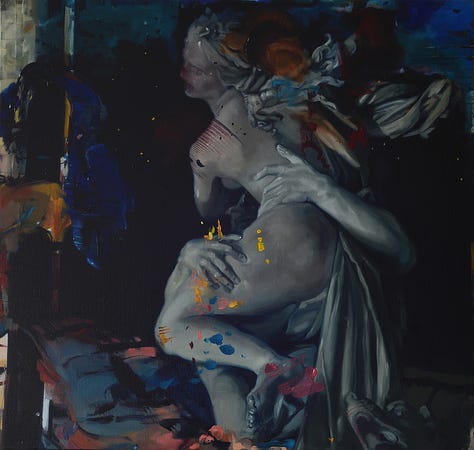

While Eva is talking, I secretly think that I would not like to have such a big painting of a statue in my living room. It doesn’t sound as a nice thing to say, therefore I turn it into the question: “Would you hang it in your house?”
Eva replies that this David did hang in her home for a while. She adds that she can understand that some paintings are not for the living room, that you don’t want to see them every day. Some works are not that easy. Did she make other ‘not so easy’ paintings?
Sure!
We walk over to a painting of a shiny statue and Eva explains that these kind of paintings are food for her soul as a painter.
Painting the shine on the statues (and for that matter, the ceramics as well) requires technical skills and is challenging. There is always the tension: will I be able to create the same feeling of the texture? Painting like this is a craft. And it is all about the fun of painting and the satisfaction it can give.
Playing with minds
Do you sometimes settle for less?
When I am not satisfied, I put it off. First of all, I need to be happy. Of course some things are better painted than others, but when it fits in the whole, it is good. I also love to play with minds, you know. Sometimes you don’t need everything to be perfect. When you look at it and you think it is perfect; then that is enough. And then it is also magic: from a distance you see a bottle or a glass, but when you come closer you see it is just a stripe or so. Or the other way around: you see something that looks painted quite roughly but when you come closer you discover a lot of details. I like to play with that. Not every object needs to be painted as detailed. Your brain will complete the picture; when it sees one perfect object it will think the other is just as perfect.
Tell us about a painting
Can you describe a painting for us? Eva looks around for exactly one second and then she decides to pick the painting hanging on my right.
This is a painting of a kimono girl. And I really love the robe because it gives me as a painter the colorfulness ‘for free’. Just by looking at it I feel inspired. This one is blue so I wanted a blond model … and it worked!
Did you take a photo or was she posing for you?
Eh, both. The posing was really quick, I made little sketches. But it helped me to know how she moves, and what could be a good composition. And then I finished it with the photos.
She didn’t need to pose one more time for you?
No, not for this painting. If it would have been a portrait and it had needed to resemble exactly this girl, then probably yes.
We are looking at the picture together in a short silence before Eva points out the use of gold leaf on the rim of the kimono.
Working with gold leaf is always sort of abstract. The material, which is very thin, seems to have a will of its own. I cannot really control the process of applying it. That’s why I use it. If I wanted control, I could have used my brushes with gold paint - or brown, yellow and white paint, but I choose not to be in control.
So, you want to have something added to the picture that isn’t Eva de Visser?
Indeed.
With the gold leaf your aim is to lose control for a bit, so that you can observe the process as a witness; one could say that you like to surprise yourself?
Absolutely!!! Sometimes I do radical things in my painting. I take a big risk so it can go wrong. I need to do that. In several stages of the making I can take risks. Sometimes I even do it when a painting is nearly finished, or I do it in the middle of the process. Not so much in the beginning, then I am really in control. But when I finish, I need to do this. I need the feeling that it can go wrong. I need the tension in my stomach. It makes me feel alive!
On becoming ‘an artist’ and heroes
When was the first time you called yourself a painter?
That is a good one! Yeah, that’s a good one … But an even better question is: ‘When did I no longer struggle with calling myself an artist’. These are two different things to me. I was already okay with being a painter, but for a long time I had difficulties calling myself an artist because that is up to the viewers. It is up to them whether they want to call my work art. I am just doing my thing! Nowadays, I call myself an artist and I have no longer a problem with it.
So what has made the difference? You’ve sold a lot of your work – that must have helped?
I got used to it and I have built more confidence since I finished art school.
Do you see your own work as confident? Can you see that your work is far better than others?
Gosh, that is really difficult. I have to say yes, because that makes me stronger. Haha … But I am only as good as my last painting. I always seek improvement. When I need to talk about a painting that I’ve made a few years ago then that is tough for me.
Do you have any heroes?
Some heroes of my youth are no longer really heroes to me because at some point I equaled their technical accomplishments. It helps me when I realize I’ve made progress and I went further in my art. I am not talking about the subjects, the composition, or … I am talking about the technique, because you can measure that. You cannot measure art. Art has sometimes nothing to do with technique. You look at a painting and it is just good.
Is every painting that evokes emotion in a viewer ‘art’?
Yes, I think so. Even when it is made without the intention to make art, it can be art. There is no formula for making art.
You are an autonomous painter nowadays. How did your career start?
As a high school girl I didn’t think I could be an autonomous painter. I thought I had to combine it with something more commercial like being an illustrator or something in advertisement. So, I chose ‘graphic design’ and went to Breda, a city in the south of The Netherlands. There, I got rid of the idea of making money. An art school is a world of its own. It was there that I realized I wanted to just paint. Dutch art schools were – and maybe still are – focusing more on the conceptual part and less on the technique. Some of the teachers saw my hunger for technique and gave me individual/private instructions. But to a great extent, I taught myself by looking at paintings of old masters.
Your use of dark and light reminds of the classical artists such as Rembrandt – but at the same time it is also ‘very Eva’! Were you aware of the influence?
Yes of course, but not only Rembrandt inspired me. I think travelling as a child through Europe with my parents and seeing all those artworks formed me. If I would have to name a few painters who inspired me, I would name the Spanish painters Velásquez and Goya. And going to Italy: Michelangelo, Da Vinci, Caravaggio and as I mentioned before, the sculptor, Bernini.
Dream big
If you dream big, what do you dream?
To paint my best painting.
Isn’t that your nightmare? Then you will be finished.
Haha, no, every time I finish a painting I think ´this is not my nicest painting,´ so I continue painting. I know deep inside that I can always do better. That is frustrating as well but it keeps me going. And of course, I want to be noticed and exposed but that isn’t my biggest dream. My dream is to paint that one painting that I can be really proud of.
Do you have a worldly desire; to be noticed by a certain critic or painter?
No, not per se. Most of all, I would like to share my work with many people. Everybody has an ego and of course I would love the recognition. I would really like to exhibit in an internationally renowned gallery. I would really like that! I am curious how people abroad see my work. I’d like to have a different audience. The Dutch people see my work in a certain way and I am curious what people from other cultures think of it. Of course, I get reactions on social media and that is very interesting to me. I already sold some paintings in the US, so yes, they might like my art abroad. Who knows?!?
I am paint
A normal working day of Eva, what does it look like?
I work almost every day from ten till seven. I cannot start at, for instance, four o’clock because I need a full empty day in front of me. So, I come to my atelier at ten and I just start. That is very important. Just to start! Sometimes I have a very productive day in which I accomplished a lot and sometimes it is more about the looking and less about the doing. Looking helps in finding out what I must do the next day. I need those days when I just observe, too.
So every day is a successful day for you?!
Haha! Well, not always. Sometimes, I am getting ready to go home for the day and at the last moment I think ‘No, what did I do? It is all wrong!’ and then I radically destroy my work. I don’t sleep over it.
And the next day?
The next day I regret it, but I am also relieved that I can start afresh again.
You love painting. (I said this as a statement – a sentence without a question mark - because the love is so obvious when you are near Eva).
YES! But I love it and I hate it! It is how I am. I cannot live without it. But it is so demanding that sometimes you have to hate it as well. But, yeah, I love it.
I am paint!
To learn more about Eva de Visser’s work, you can follow her on her Instagram pager visit her webpage.







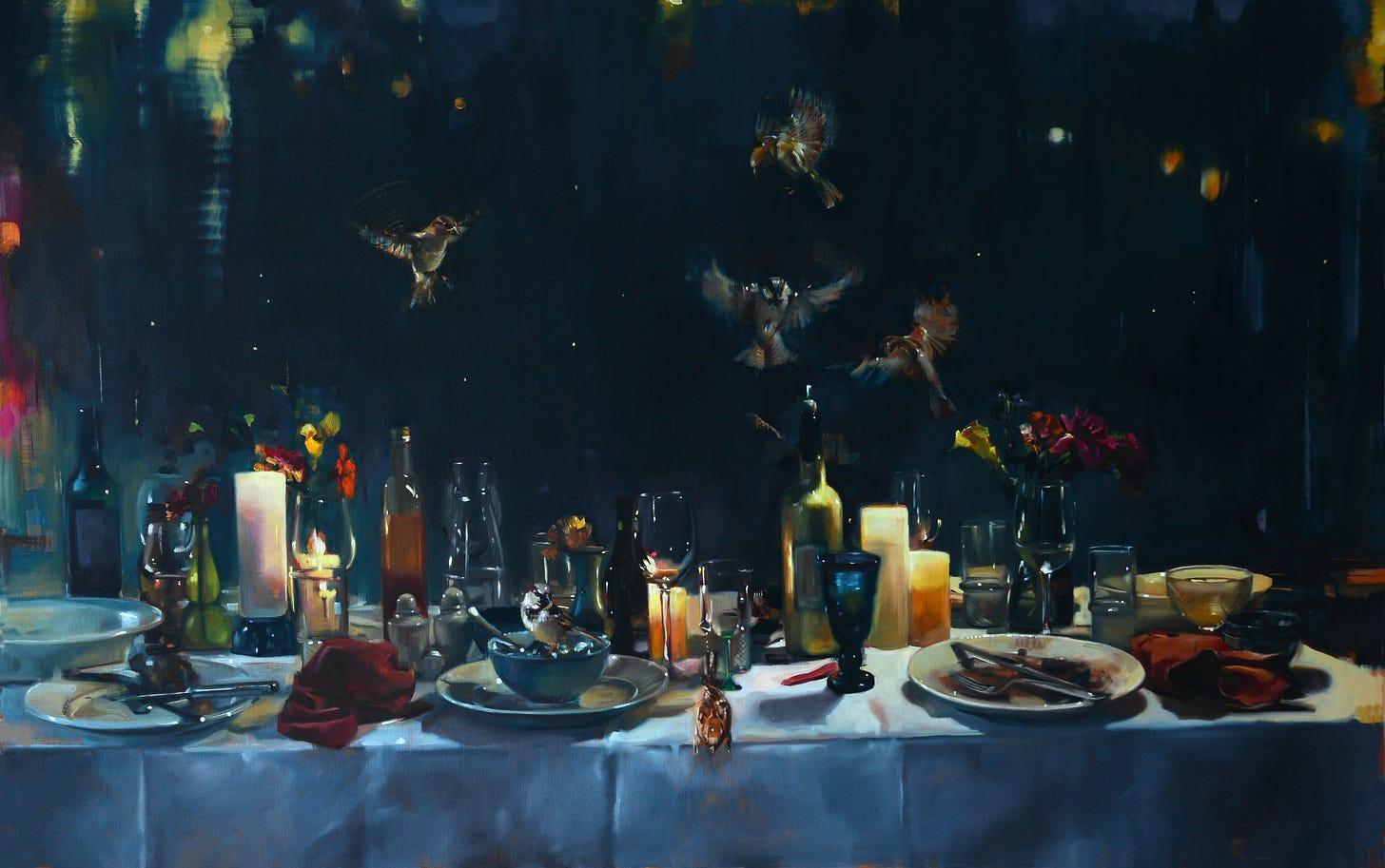
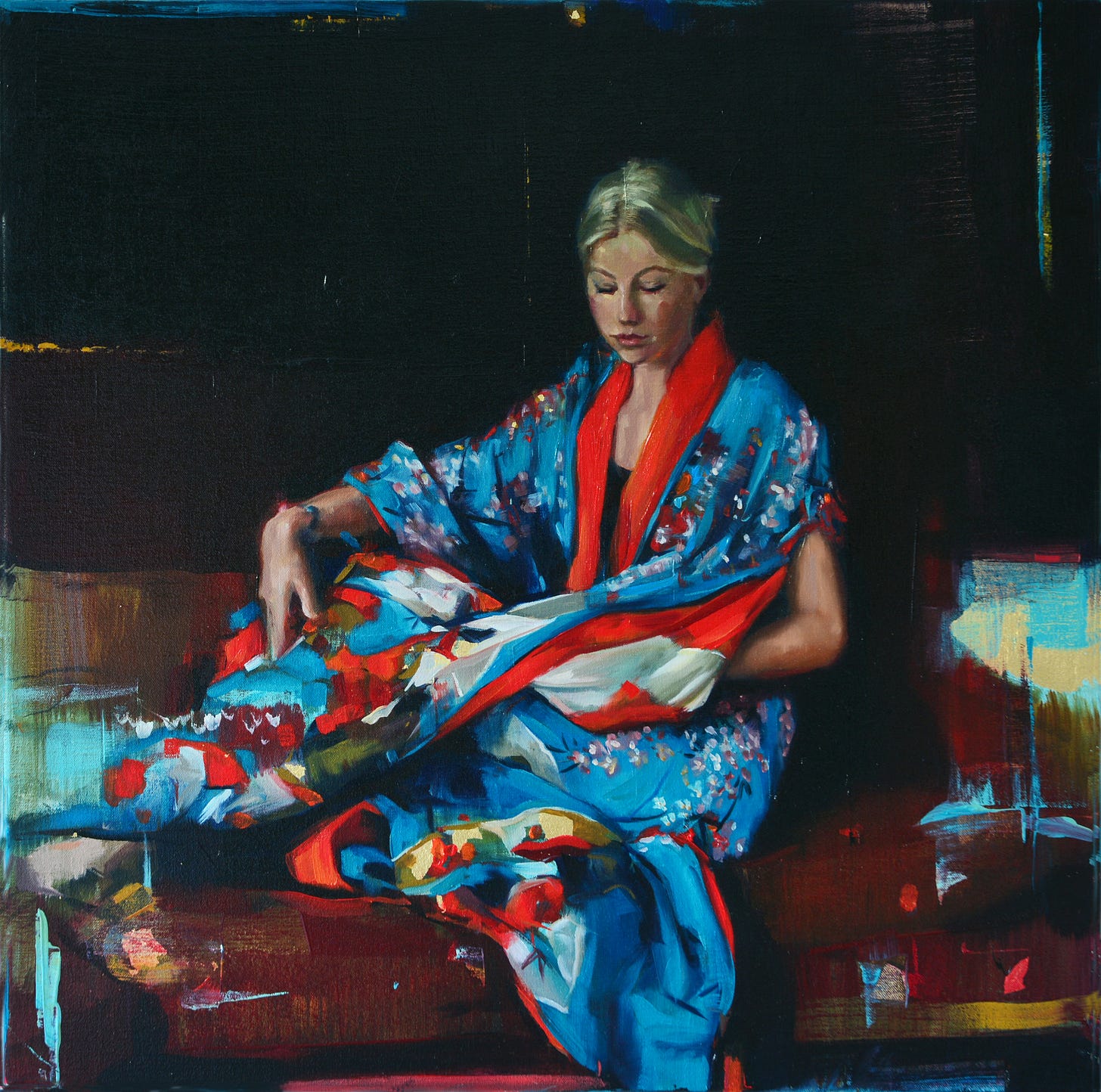
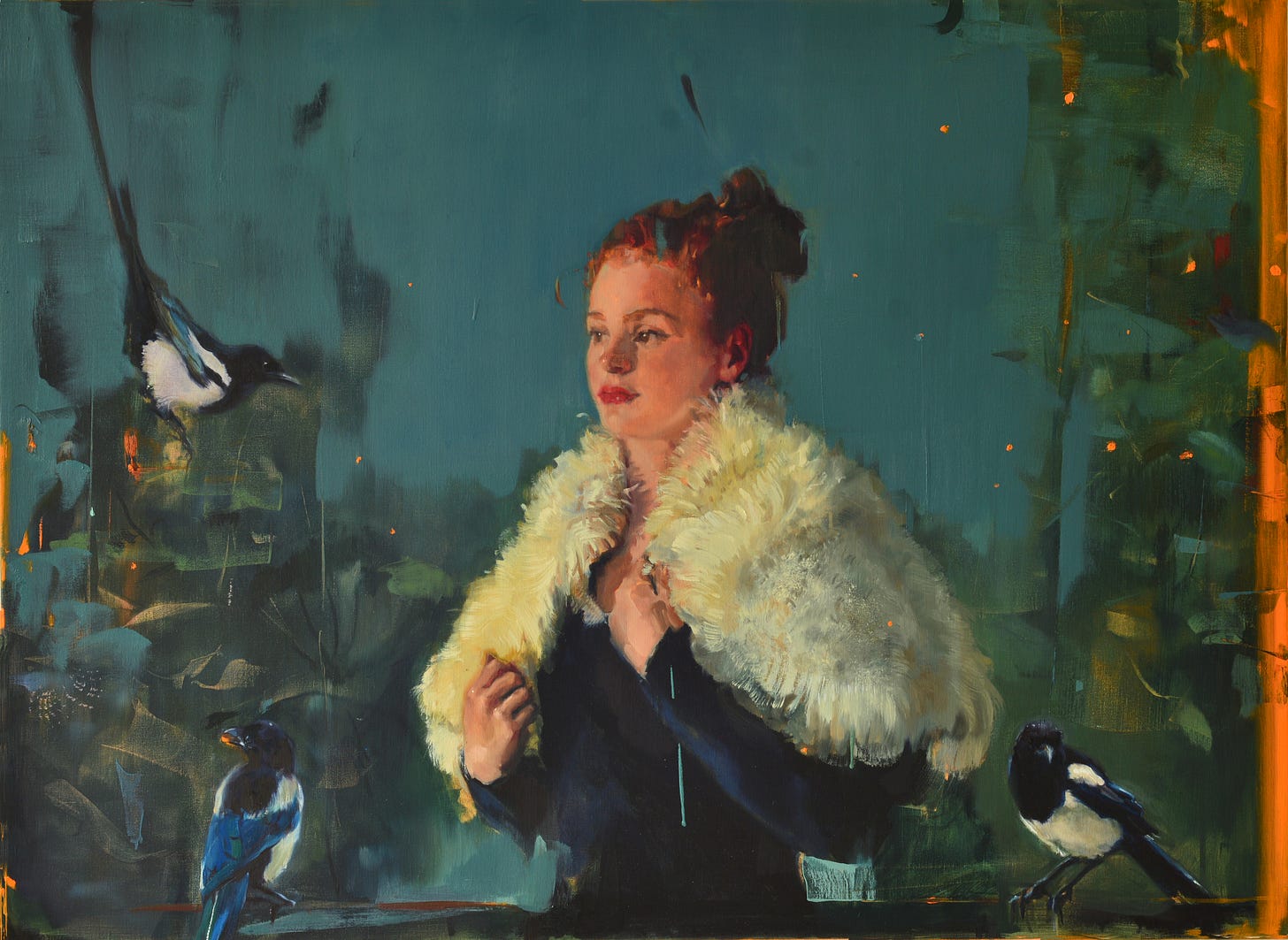
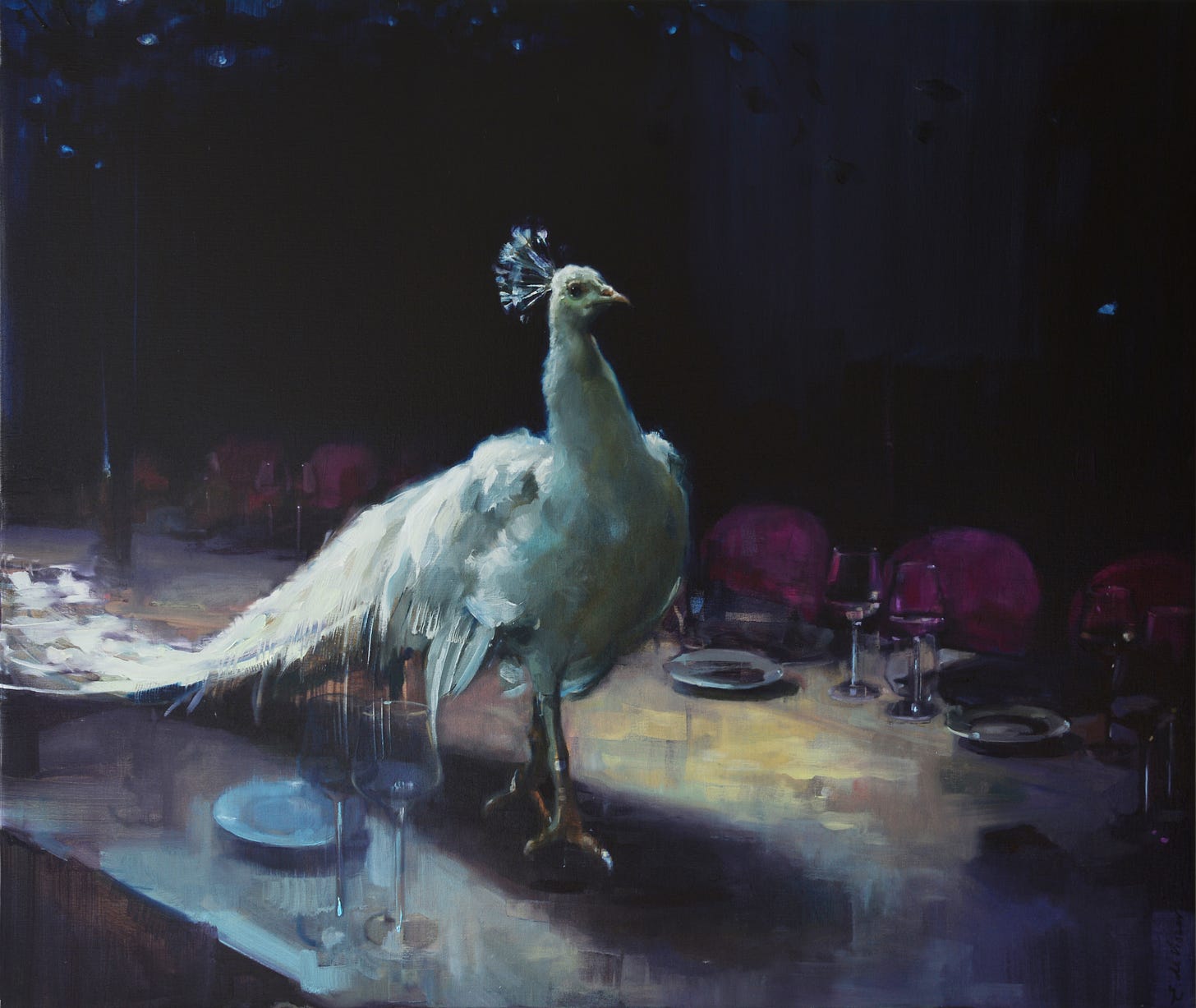
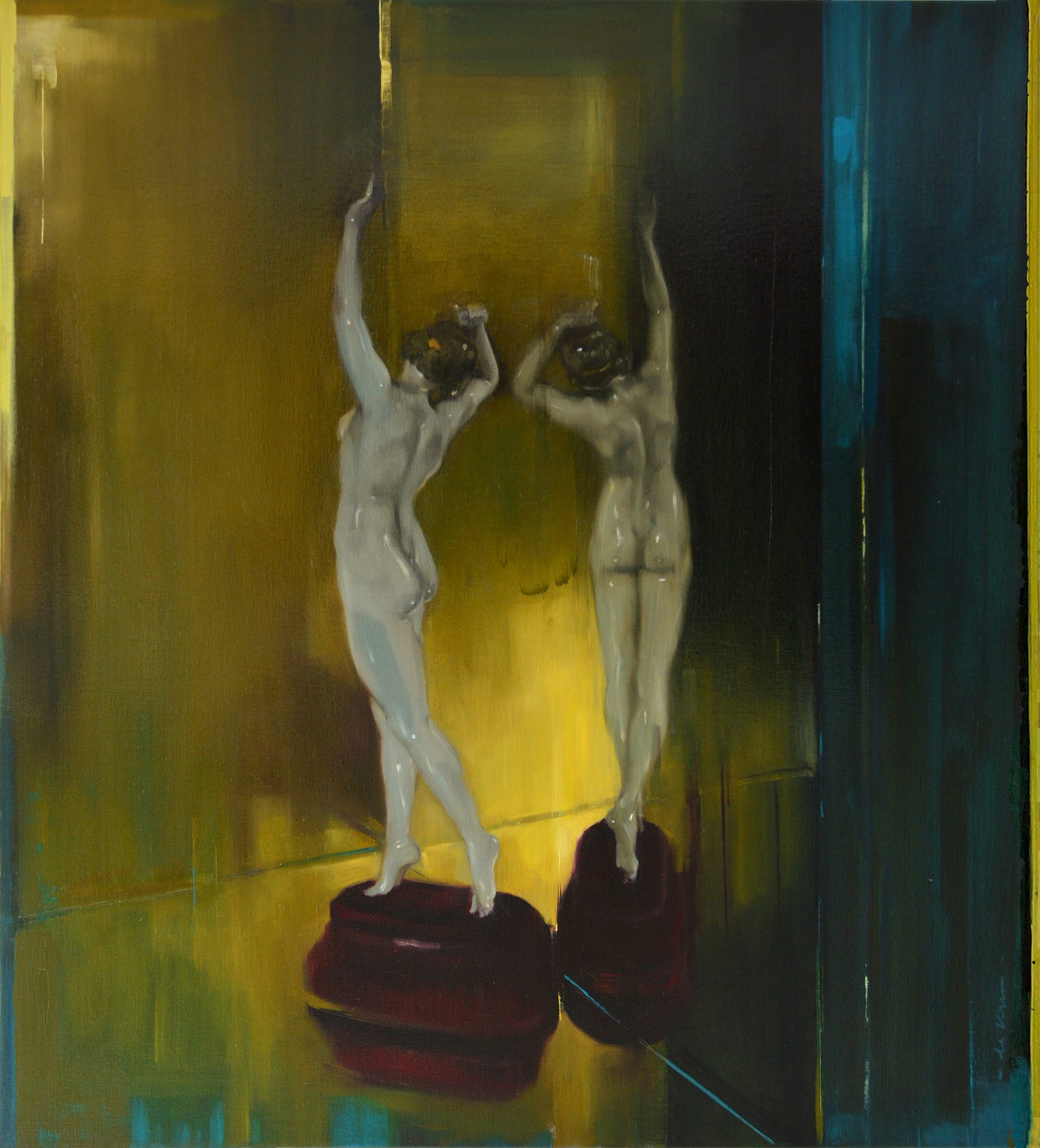
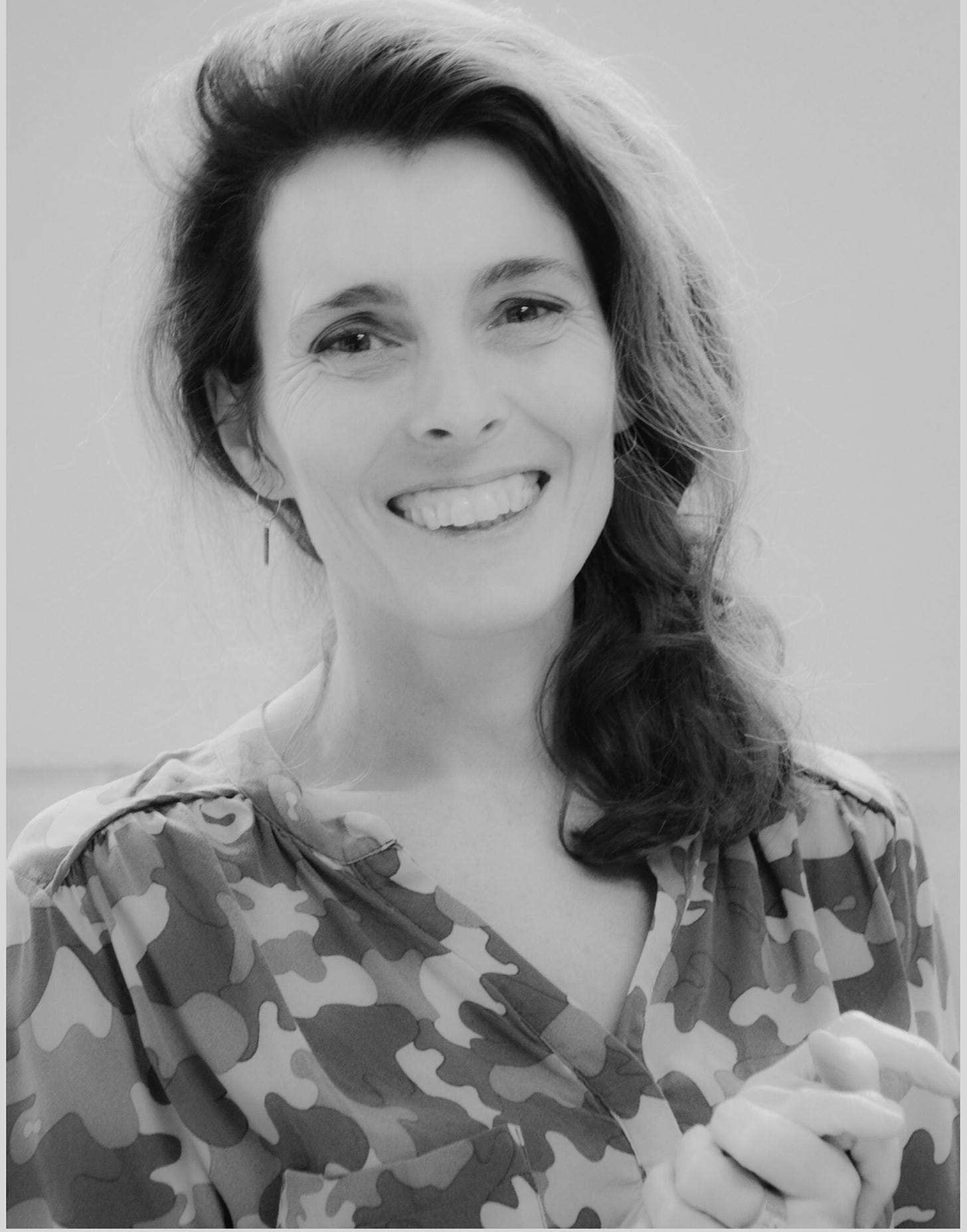

Thanks for bringing Eva's work before my eyes. I was watching , not breathing. There is a harmony and piece. I would be very happy watching every day that harmony of different aspects of life. The deer and a small bird. Together. What a joy